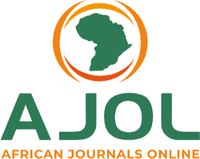CLINICAL SIGN OF Lymphatic filariasis IN FOUR LOCAL GOVERNMENT AREAS OF GOMBE STATE
DOI:
https://doi.org/10.56892/bima.v2i02.86Keywords:
Lymphatic filariasis, clinical sign, Gombe StateAbstract
A survey on the clinical signs of a neglected tropical disease: Lymphatic filariasis was conducted
in four Local Government Areas (LGA) Balanga, Gombe, Kaltungo and Yamaltu Deba LGAs of
Gombe State during advocacy campaign on malaria eradication aim at determining the
prevalence of the disease so as to encourage community acceptance of Indoor Residual Spray
(IRS) activities in Gombe State. The overall clinical sign of Lymphatic filariasis in all the 3,145
people inspected in 200 houses of the four local governments was (3.2%). Kaltungo LGAs had
the highest recorded cases of (5.2%) out of the 538 people inspected, followed by Balanga LGA
with (4.3%) out of the 650 people inspected and Yamaltu/Deba with (3.1%) out of the 1,081
people inspected with the least in Gombe LGA with (1.6%) out of the 976 people inspected.
Clinical sign by age group shows that: Age 15-30 group had the least infection of (13.7%) and
the highest was observed in Age 46 and above with (46.1%). Males were more infected (60.7%)
than females (39.2%) the difference however, was not statistically significant at 95% level of
confidence limit. The presence of clinical signs of the disease caused by the mosquito vector will
give a better community acceptance of the intervention in question during advocacy campaign.





